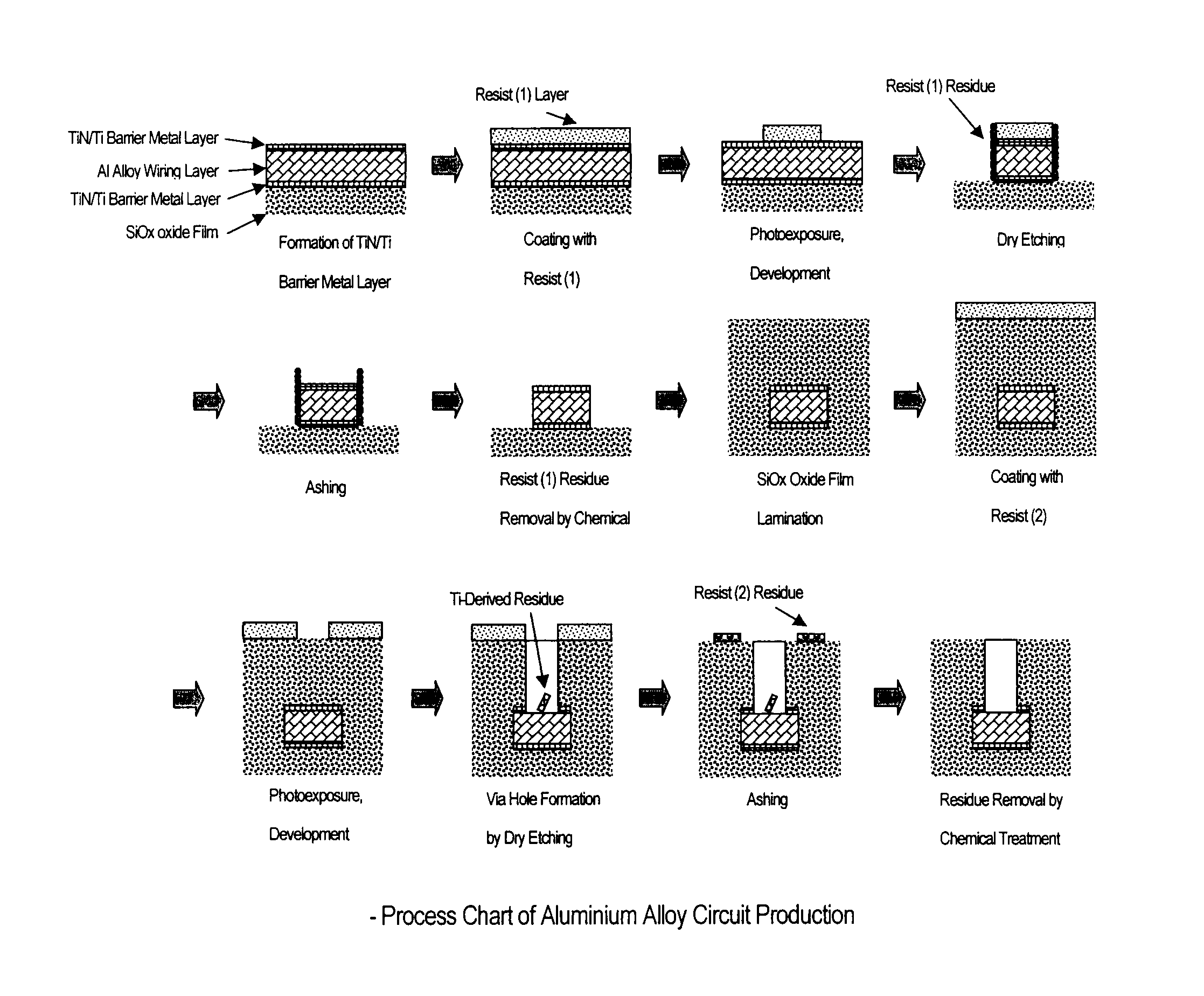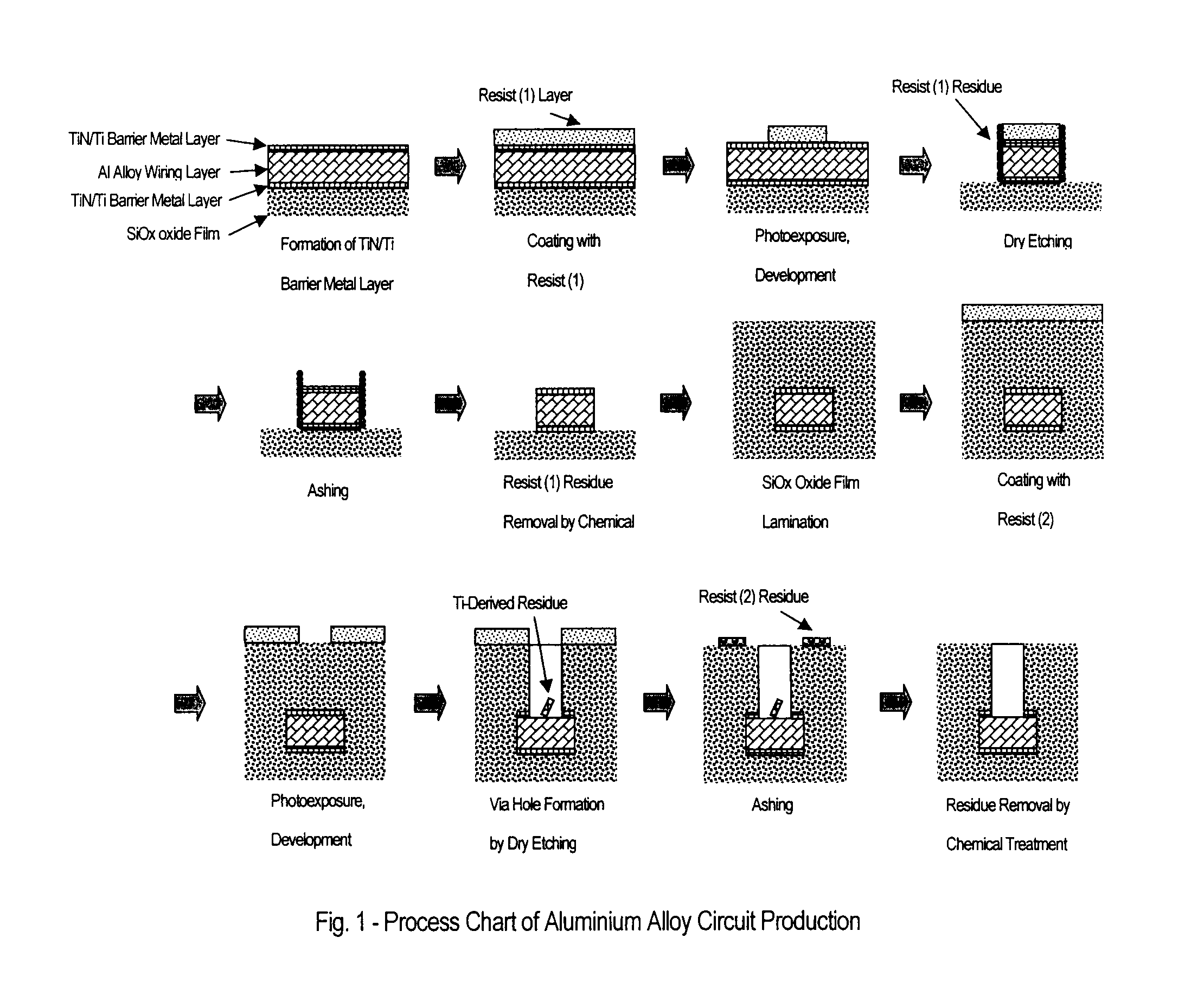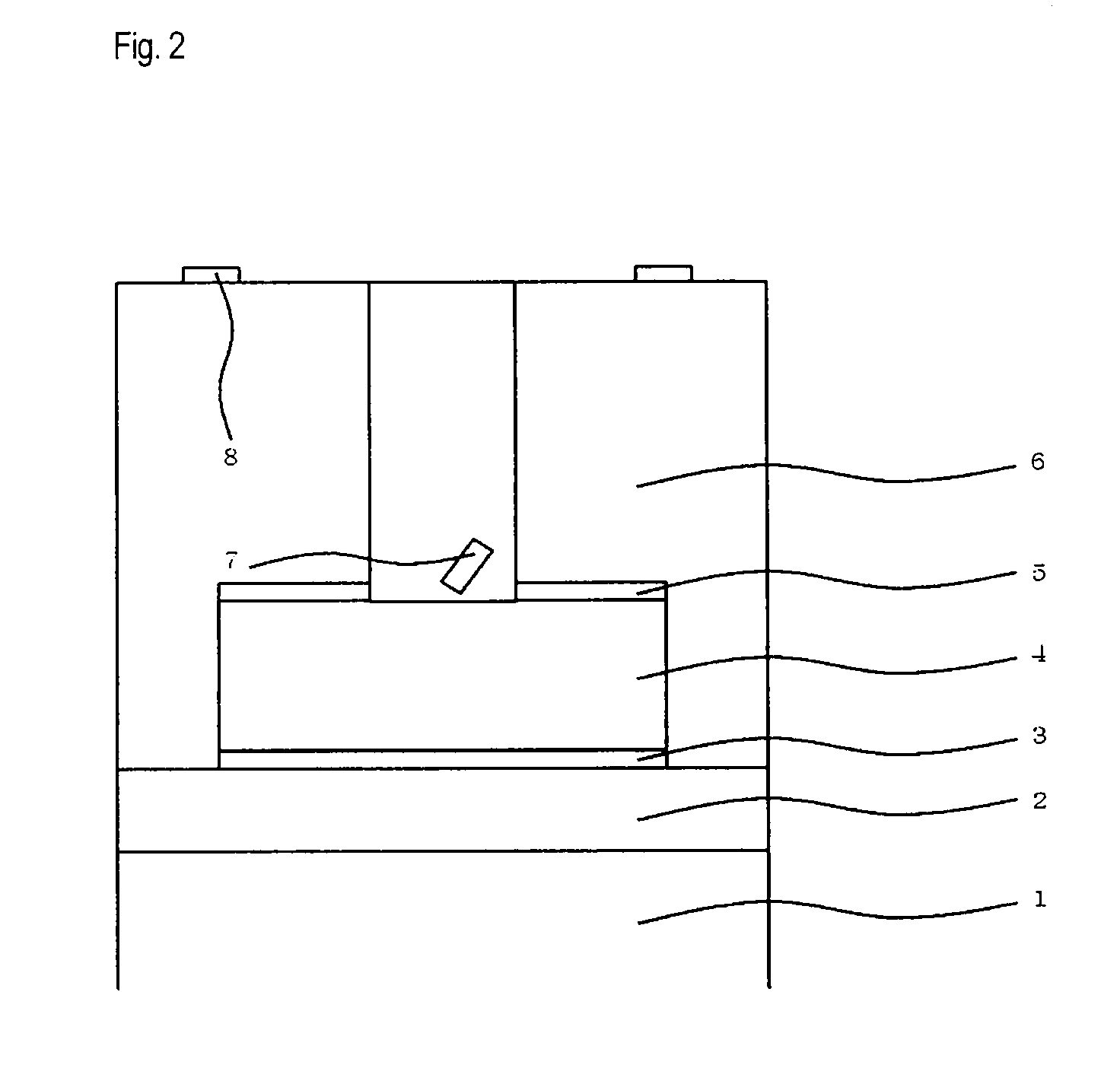Residue removing liquid composition and method for cleaning semiconductor element using same
a technology of residue removal liquid and composition, which is applied in the direction of inorganic non-surface active detergent compositions, instruments, photomechanical equipment, etc., can solve the problems of chemical liquids that cannot exhibit sufficient anticorrosion performance for interlayer insulating films and via holes, and the organic amine-based removal liquid cannot be used, so as to achieve the effect of increasing the yield
- Summary
- Abstract
- Description
- Claims
- Application Information
AI Technical Summary
Benefits of technology
Problems solved by technology
Method used
Image
Examples
example 1
, Comparative Examples 1 to 9, and 16 to 24
[0070]According to the formulation (% by mass) shown in Table 1, residue removing liquid compositions of Example 1, Comparative Examples 1 to 9 and 16 to 24 were prepared. The residue removing liquid composition of Example 1 contained ammonium fluoride, while those of Comparative Examples 1 to 5 and 16 to 20 contained hydrofluoric acid as the fluorine compound in place of ammonium fluoride and those of Comparative Examples 6 to 8 and 21 to 23 contained tetramethylammonium fluoride. The compositions of Comparative Examples 9 and 24 did not contain a fluorine compound. The residue removing liquid compositions of Example 1 and Comparative Examples 1 to 9 contained 3-methyl-1-pentyn-3-ol as the carbon-carbon triple bond-having compound (anticorrosive) in an amount of 2.00% by mass, but those of Comparative Examples 16 to 24 did not contain the anticorrosive. The reagents used here are all special grade chemical reagents.
[0071]The sample wafer f...
example 2
, Comparative Examples 10 to 12 and 25 to 27
[0073]According to Table 1, residue removing liquid compositions of Example 2 and Comparative Examples 10 to 12 and 25 to 27 were prepared. The molar ratio of methanesulfonic acid / fluorine compound was 1.00 in the residue removing liquid composition of Example 2; 0.75 in Comparative Examples 10 and 25; 1.69 in Comparative Examples 11 and 26; and 2.42 in Comparative Examples 12 and 27. The residue removing liquid compositions of Example 2 and Comparative Examples 10 to 12 contained ethynylbenzene as the carbon-carbon triple bond-having compound (anticorrosive) in an amount of 0.50% by mass, but those of Comparative Examples 25 to 27 did not contain the anticorrosive. The reagents used here are all special grade chemical reagents. The others were the same as in Example 1, and the results are shown in Table 1.
[0074]Using the resist removing liquid composition of Example 2 in which methanesulfonic acid / fluorine compound (molar ratio)=1.00, the...
examples 10 to 13
, Comparative Examples 31 to 33
[0079]According to Table 1, residue removing liquid compositions of Examples 10 to 13 and Comparative Examples 31 to 33 were prepared. Excluding the carbon-carbon triple bond-having compound (anticorrosive), the basic formulation of the removing liquid composition comprises 0.80% by mass of ammonium fluoride, 2.20% by mass of methanesulfonic acid, 20% by mass of diethylene glycol and 51% by mass of propylene glycol monomethyl ether with the balance of water. The residue removing liquid composition of Comparative Example 31 did not contain the anticorrosive, and the residue removing liquid compositions of Comparative Examples 32 and 33 contained an additive except the carbon-carbon triple bond-having compound as in the present invention, in an amount of 1.00% by mass added thereto. The reagents used here are all special grade chemical reagents. The others were the same as in Example 1, and the results are shown in Table 1.
[0080]The resist removing liqui...
PUM
| Property | Measurement | Unit |
|---|---|---|
| temperature | aaaaa | aaaaa |
| temperature | aaaaa | aaaaa |
| temperature | aaaaa | aaaaa |
Abstract
Description
Claims
Application Information
 Login to View More
Login to View More - R&D
- Intellectual Property
- Life Sciences
- Materials
- Tech Scout
- Unparalleled Data Quality
- Higher Quality Content
- 60% Fewer Hallucinations
Browse by: Latest US Patents, China's latest patents, Technical Efficacy Thesaurus, Application Domain, Technology Topic, Popular Technical Reports.
© 2025 PatSnap. All rights reserved.Legal|Privacy policy|Modern Slavery Act Transparency Statement|Sitemap|About US| Contact US: help@patsnap.com



